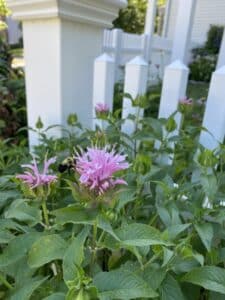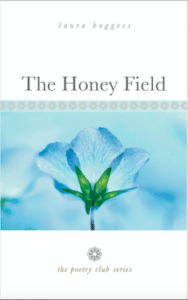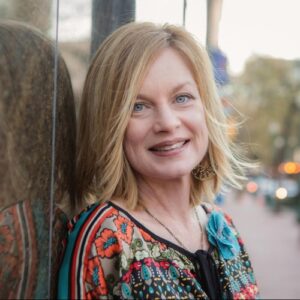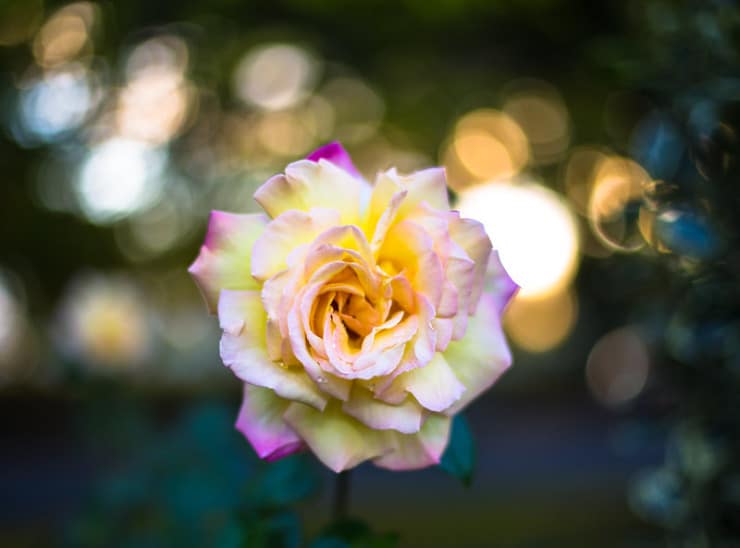
Laura Boggess writes a story about bees. And death, and grief, and life
Years ago, my company hired an expert on bees. Concern had been expressed about how one of our products was affecting bees, and bee colony collapse was a general issue. I spent considerable time with this expert on work projects, and I learned, among many other things, that honeybees came from Europe, that Missouri is home to some 75 different kinds of bees, that most bees live in the ground, that commercial beekeepers transport hives for pollination of crops like almonds in California, and what I should plant in my home garden that bees would like.

A bumble bee visits Monarda in my garden
Our beekeeper expert became a good friend. And I was inspired to plant Monarda, commonly known as bee balm. It’s a member of the mint family, and it spreads like mint, so you have to manage it. I found myself spending considerable time watching it attract bees — four different kinds, in fact, two of which were easy to identify: bumblebees and honeybees. The other two were small, almost tiny, and you had to get close to see that they were indeed bees, not gnats.
The Honey Field by Laura Boggess is about bees, too, but it’s also about much more. The novella is a story of death and grief, illness and healing, life and love. And food, including a few recipes. And bees — honeybees, to be precise, occupying several hives in a semi-rural area.
The narrator of the story, never named, is grieving the loss of a loved one after a protracted illness. Some days it’s impossible to get out of bed; grief has become depression. Earth Song, a collection of poems, has become a favored resource. But the loved one, who was named Corrie, kept beehives, and the hives need some tending. A friend forces her way in, bringing a group to teach. One member of the group is Anna, a botanist, who befriends our narrator and catches the eye of a young man named Caleb, who is a combination groundskeeper, greenhouse builder, businessman, and community presence.

Boggess is also the author of Mildred’s Garden and Waiting for Neruda’s Memoirs. She works as a counselor at a traumatic-care medical rehabilitation center, and she lives with her family in West Virginia. I suspect that some of her work experience is reflected by The Honey Field; a counselor in post-traumatic care knows about grief, depression, and illness.

Laura Boggess
My garden Monarda started with two potted plants bought from a local nursery. Those two plants spread, invaded, were trimmed back, respread, transplanted, and divided. They still bring the bees, and I’ve been watching them this blooming month of June. The flowers still attract the bees in droves before fading away by early August. Some mornings you can watch what seems like a bee convention, with scores of different kinds of bees all competing for a spot.
The flowers, and the bees they attract, are about the continuous regeneration of life. The Honey Field shares that theme, a story that needed to be told in the way that Laura Boggess tells it.
Related:
A Taste of Honey, Poetry & Love: An Interview with Laura Boggess
Sitting in Mildred’s Garden with Laura Boggess
Poetry and Healing: Waiting for Neruda’s Memoirs by Laura Boggess
Experiencing Nature and the Earth with Earth Song by Sara Barkat
Photo by pbkwee, Creative Commons, via Flickr. Post by Glynn Young.
How to Read a Poem uses images like the mouse, the hive, the switch (from the Billy Collins poem)—to guide readers into new ways of understanding poems. Anthology included.
“I require all our incoming poetry students—in the MFA I direct—to buy and read this book.”
—Jeanetta Calhoun Mish
- Poets and Poems: Donna Vorreyer and “Unrivered” - October 7, 2025
- Poet Sidney Lanier and the Lost Cause - October 2, 2025
- Poets and Poems: A.J. Thibault and “We Lack a Word” - September 30, 2025


Mick Silva says
Thanks for this review, Glynn. It was fun hearing about your garden and more of your former work life too.
Laura is a wonderful heart-full writer. I’ll definitely check this book out.